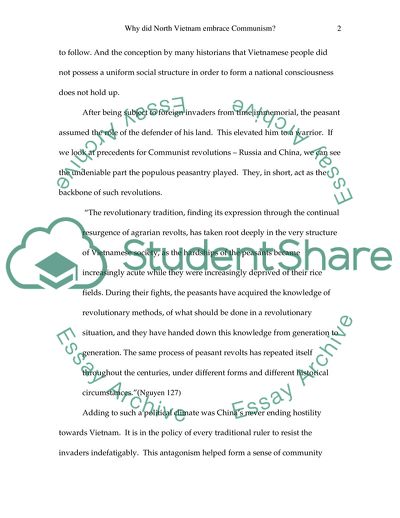Cite this document
(The Idea of Communism in North Vietnam Essay Example | Topics and Well Written Essays - 2250 words, n.d.)
The Idea of Communism in North Vietnam Essay Example | Topics and Well Written Essays - 2250 words. https://studentshare.org/history/1703381-why-north-vietnam-embraced-the-idea-of-communism
The Idea of Communism in North Vietnam Essay Example | Topics and Well Written Essays - 2250 words. https://studentshare.org/history/1703381-why-north-vietnam-embraced-the-idea-of-communism
(The Idea of Communism in North Vietnam Essay Example | Topics and Well Written Essays - 2250 Words)
The Idea of Communism in North Vietnam Essay Example | Topics and Well Written Essays - 2250 Words. https://studentshare.org/history/1703381-why-north-vietnam-embraced-the-idea-of-communism.
The Idea of Communism in North Vietnam Essay Example | Topics and Well Written Essays - 2250 Words. https://studentshare.org/history/1703381-why-north-vietnam-embraced-the-idea-of-communism.
“The Idea of Communism in North Vietnam Essay Example | Topics and Well Written Essays - 2250 Words”. https://studentshare.org/history/1703381-why-north-vietnam-embraced-the-idea-of-communism.


